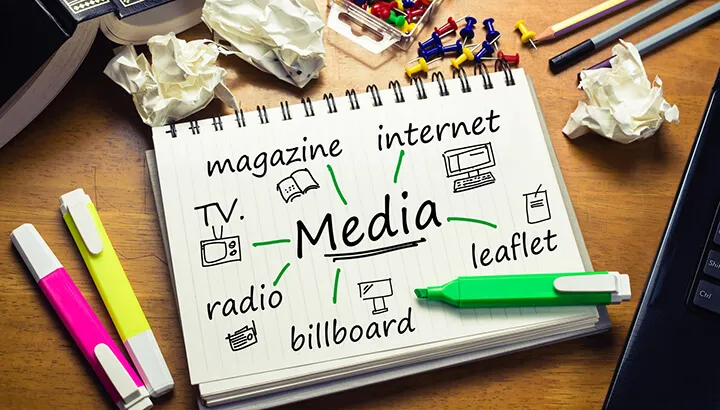
- Share on Facebook15
- Share on Pinterest
- Share on Twitter
There is something magical about a book. You read words and sentences hatched in somebody else’s brain. In the process, your mind takes flight and your imagination soars.
I believe everyone has a book in them. Indeed, I meet so many people who express the desire to write one… someday. Maybe you’d like to pen a memoir, a novel, a how-to guide or a work of nonfiction. Whatever genre you’d like to share, it has never been easier to produce an ebook, paperback or hardcover. If you’ve ever wanted to become an author, then here’s an article that will help you get your book published through Amazon.
Why choose self-publishing
In the past, there were several steps you needed to take in order to get your work into book form. To begin with, apart from the actual writing, you also needed to draft a proposal, enlist a literary agent, submit a sample chapter to a publisher and then hope for the best.
Typically, this process took years and most budding writers — even very talented ones — got rejected. In fact, publishing houses often looked for qualities most aspiring authors didn’t have (such as media exposure, industry connections and celebrity endorsements) before they’d plop down a substantial advance. Not surprisingly, some now-famous authors, like J.K. Rowling of Harry Potter fame, endured multiple rejections.
Nowadays, digital tools give virtually anyone the ability to produce a professional looking book. However, to make sure your books looks and reads well, you’ll want to follow the steps discussed below. But first, a few thoughts on why you should opt for self-publishing:
- You’ll have complete artistic control.
- In most cases, self-publishing will allow you to get your book to market much quicker than if you went through a traditional publisher.
- Typically, you won’t get an advance when you self-publish, but you’ll probably do better when it comes to royalties.
Drawbacks of self-publishing
Of course, there are some caveats and possible drawbacks when it comes to self-publishing. For instance:
- You’ll be responsible for editing your manuscript.
- The cover design will be your responsibility.
- You’ll likely confront minor technical challenges as you convert and upload your text from the word processing program you used to write your manuscript.
All of these issues are fixable, but they may require a little patience and persistence. In any event, I’ll try and steer you in the right direction when it comes to these modest high-tech hurdles.
Writing your book: why and how

There are a lot of good reasons to write a book. Self-expression and the satisfaction of sharing your perspective, experiences and ideas are motivation enough. However, writing a book can also be a great way to help establish thought leadership, burnish your professional credentials or build your personal brand.
Okay, you’ve decided to become an author. The next step is to start writing. I’d recommend using a popular word processing program like MS Word. Ultimately, you’ll need to submit your text files to Amazon self-publishing site and using a well-known program will help ensure you don’t experience compatibility issue.
By the way, for a quick overview of how you should format your book in Word you can check out the following helpful video. If you’re not that confident tech-wise, then you may want to use ready-made templates, where the correct format is already built in for you.
For example, Createspace, Amazon’s self-publishing division for bound books, includes a number of downloadable templates, which can help ensure that your book’s format meets Amazon’s publication specifications. You can visit Createspace’s “Setting Up Your Document” page to view sample templates, which will give you an idea of how your book will look on the inside. Then, you can download a blank template that matches the trim size and interior style you want for your book.
You can also use Google Documents and other word processing programs when writing your book, but it may be harder to find technical support if you encounter formatting challenges. Ultimately, any program you use will need to be able to convert your document to a PDF format. In Word, you can do this by clicking “Save As” and then choosing the “save as PDF file” option.
If you are new to self-publishing or not especially technically inclined, then I’d particularly recommend using one of Createspace’s pre-formatted templates. This is the easiest way to make sure your manuscript stays organized and meets the correct formatting standards.
If you choose not to use one of their templates, however, just make sure your manuscript is written and saved in just one document file. In other words, don’t write and save individual chapters as separate documents.
Submitting your book
Okay, you’ve succeeded in writing your book. Now you’d like to share it with the wider world. I believe Amazon is a very good option because you can self-publish at no-cost. However, you also avail of premium services a la carte — such as cover design — if you desire.
Now that manuscript is ready to self-publish you’ll want to visit Amazon’s Createspace site and sign up for a free account. At this stage, you can check out the various helpful links, which will give you an overview of the publishing process.
As you’ll see, ultimately you’ll need to make some decisions about pricing, royalties and distribution options. When you are ready, you can start setting up a title for free or use their publishing advisor tool, which is a questionnaire that will help guide you in the right direction.
When setting up an account you’ll need to provide information for the following:
- Title
- Subtitle — this is particularly if your book is nonfiction because it will give potential readers a more precise sense of what you book is about
- Author’s name and contributors
- Book language
- Genre (romance, nonfiction, how-to-guide, etc.) — this will help potential customers browsing in particular sections to find your book
- Relevant keywords — the right topic-related terms will help your book rank higher as far as search engines go
- A short description of your book — this should read like the blurb on a dust cover of a book, which provides a reader-friendly overview of what your book is all about. It’s usually a good idea to include several of your keywords in the description too.
- Verified copyright — here you acknowledge that the work you are self-publishing is original and that you own the rights to it.
- An ISBN number — with Amazon, you can have ISBN numbers assigned automatically for free for both print and electronic editions of your book.
By the way, Amazon includes many helpful resources, including instructional videos, which can help you navigate the book setup process.
Cover design

While it’s true that you shouldn’t judge a book by its cover, most people do. As a result, you should make every effort to make sure you cover is as attractive and inviting as possible. Thankfully, Createspace makes it quite easy to come up with a professional looking one. Essentially you have three options:
- Createspace offers premium services where professional graphic artists will create a custom cover for you.
- You can utilize free Createspace templates, which will help you design your own cover.
- You can upload your own cover artwork in a PDF format.
In fact, it’s very easy to use the free templates to create your own cover and the results can look great. You can pick from a variety of layouts, backgrounds, title fonts and royalty-free images. At this stage, you’ll be asked to input both a snappy bio and a description of your book, which will appear on the back. If you like, you can also upload a professional-looking headshot to accompany your bio.
Kindle ebooks and electronic editions
Ebooks are a great way to get your work out in front of a wider audience. In particular, Amazon’s Kindle format is popular with both readers and authors alike. Once you’ve written your manuscript, it’s usually quite easy to upload it to Amazon’s Kindle platform. The first step you’ll want to take is signing up for a free Kindle Direct Publishing (KDP) account. This is where you will enter information about yourself and your book (much as you did with Createspace).
After you signed up for an account you’ll have an opportunity to upload your manuscript, which will automatically be converted into the Kindle format. You should use the preview feature to see how your book will look on a Kindle browser, app or device.
Marketing

You can think of self-publishing as a three-step process.
- Writing — this encompasses editing and formatting
- Uploading — setting up your user account, providing your book’s description and making sure your manuscript gets uploaded and converted properly
- Marketing — this includes setting up a promotional page at Author Central, tapping the power of social media and encouraging digital word of mouth
Finishing your manuscript and turning it into a saleable product is just half the battle. You also want readers. Many authors do not appreciate the importance of this phase. In most cases, your book will not sell itself. As a result, you’ll have to engage in a fair amount of promotion to get the word out. Here are some things you should be doing to market your book:
- Create a page for yourself at Author Central. Here you can include a photo, bio, multiple book titles and links to your blog or promotional book trailers.
- Make a video trailer describing your book. You can post this to Youtube, Facebook and your Author Central page.
- Get reviews. Having people rate and review your book can be very helpful. Asking friends and acquaintances to read and review your book can get the ball rolling. Also, providing free review copies of your book to thought leaders, influential bloggers or anyone who can help you gain media exposure (through newspapers, magazines, radio or podcasts) can be key.
- Get the word out on social media. In particular, write articles or blog posts related to your book and post them on sites like LinkedIn and Medium. Then, provide a link in your byline where readers can download a sample chapter and purchase your book.
- Join online author forums. Here you can learn more about other marketing techniques that self-published authors are using to promote their works.
- Give a book talk at local libraries. Often, libraries will help promote your talk and you can usually sell copies of your book afterward.
The work you put in will be worth it
Platforms like Amazon’s Createspace and KDP have made the process of self-publishing so simple that virtually anyone can become an author. However, creating a high-quality book that will attract lots of readers involves a fair amount of effort too.
To succeed will take more than great writing. You’ll need to devote a fair amount of time and resources towards editing, cover design and marketing. But there are few things more rewarding than hearing people say, “I loved your book!”
With that in mind, what topic are you going write about?
— Scott O-Reilly
- Share on Facebook15
- Share on Pinterest
- Share on Twitter

